Minimizing Manual Lifting: Strategies for a Safer Workplace
Date Posted:29 April 2024
By implementing engineering controls, developing safe work procedures, promoting ergonomic workstation design, providing personal protective equipment, and encouraging employee involvement, businesses can create safer work environments.
In workplaces across Australia, manual lifting tasks are a common occurrence, but they can pose significant risks to employee health and safety if not managed properly. From warehouses to construction sites, retail stores to offices, the physical strain of manual lifting can lead to musculoskeletal injuries and long-term health issues. However, by implementing effective strategies to minimize manual lifting, businesses can create safer work environments and protect their employees from harm. In this blog, we'll explore practical ways to reduce manual lifting in the workplace and promote a culture of safety and well-being.
Understanding the Risks:
Before delving into strategies for minimizing manual lifting, it's essential to understand the risks associated with these tasks. Manual lifting involves lifting, lowering, pushing, pulling, or carrying objects by hand, and it can lead to strains, sprains, and other musculoskeletal injuries if performed incorrectly or excessively. Factors such as heavy loads, awkward postures, repetitive motions, and lack of proper lifting techniques contribute to the risk of injury. Additionally, age, fitness level, and existing health conditions can increase vulnerability to injury. By recognizing these risks, businesses can take proactive measures to mitigate them and ensure a safer workplace for all employees.
Implementing Engineering Controls:
One of the most effective ways to minimize manual lifting in the workplace is through the implementation of engineering controls. These controls involve the use of mechanical aids and equipment to assist with lifting tasks, reducing the physical strain on employees. For example, lifting devices such as hoists, cranes, and lift tables can be used to lift heavy loads safely and efficiently. Conveyor systems and pallet jacks can also facilitate the movement of goods without requiring manual lifting. By investing in these engineering controls, businesses can significantly reduce the risk of injuries associated with manual lifting and improve overall workplace safety.
Developing Safe Work Procedures:
In addition to engineering controls, businesses should develop and implement safe work procedures for manual lifting tasks. These procedures should outline proper lifting techniques, as well as guidelines for assessing and managing risks associated with manual lifting. Employees should receive training on these procedures to ensure they understand how to perform lifting tasks safely and effectively. Key elements of safe work procedures may include:
Assessing the weight and size of objects before lifting.
Using team lifting techniques for heavy or awkward loads.
Avoiding twisting or bending at the waist while lifting.
Keeping loads close to the body and using leg muscles to lift.
Taking regular breaks to prevent fatigue and overexertion.
By establishing clear and comprehensive safe work procedures, businesses can empower employees to perform manual lifting tasks safely and minimize the risk of injury.
Promoting Ergonomic Workstation Design:
Another important aspect of minimizing manual lifting in the workplace is promoting ergonomic workstation design. This involves evaluating work surfaces, shelving heights, and storage arrangements to minimize the need for manual lifting and reduce physical strain on employees. For example, storing frequently used items at waist height or on shelves that slide out can eliminate the need for reaching or bending to access them. Adjustable workstations and ergonomic tools can also help employees maintain neutral postures and reduce the risk of injury. By prioritizing ergonomics in workstation design, businesses can create safer and more comfortable work environments for their employees.
Providing Personal Protective Equipment:
In some cases, personal protective equipment (PPE) may be necessary to minimize the risk of injury during manual lifting tasks. For example, back supports and lifting belts can provide additional support to employees when lifting heavy loads. However, it's important to note that PPE should not be relied upon as the sole means of preventing injuries. Instead, it should be used in conjunction with other control measures, such as engineering controls and safe work procedures. Employees should receive training on the proper use and maintenance of PPE to ensure it is effective in reducing the risk of injury.
Encouraging Employee Involvement:
Finally, businesses should actively encourage employee involvement in identifying hazards and suggesting improvements to minimize manual lifting in the workplace. Employees are often the ones performing manual lifting tasks on a daily basis, so they have valuable insights into potential risks and opportunities for improvement. By fostering a culture of open communication and collaboration, businesses can harness the knowledge and expertise of their workforce to identify hazards, implement controls, and continuously improve workplace safety. Recognition and reward systems can also incentivize employees to actively participate in safety initiatives and contribute to a safer workplace for everyone.
Conclusion:
Minimizing manual lifting in the workplace is essential for protecting employee health and safety and reducing the risk of musculoskeletal injuries. By implementing engineering controls, developing safe work procedures, promoting ergonomic workstation design, providing personal protective equipment, and encouraging employee involvement, businesses can create safer work environments and improve overall workplace safety. By prioritizing the well-being of their employees, businesses can enhance productivity, reduce absenteeism, and build a positive safety culture that benefits everyone.
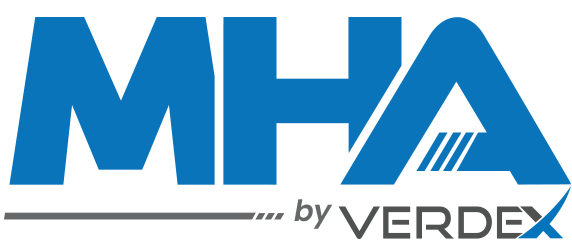

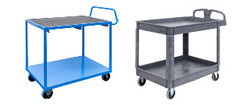
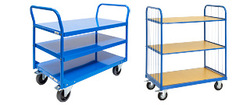
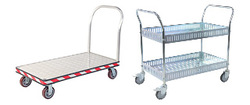
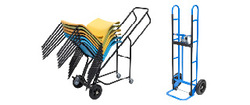
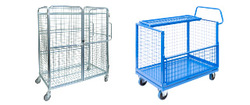
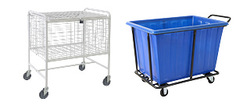
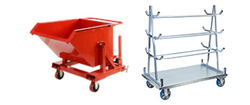
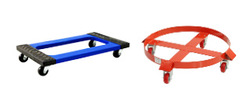
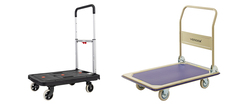
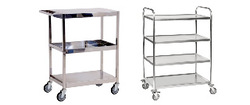
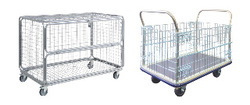
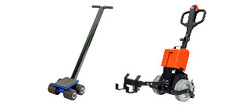
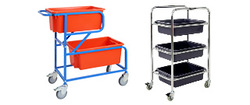
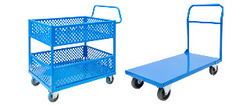
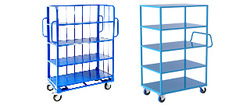
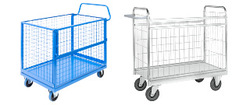
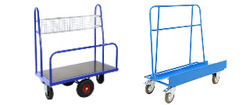
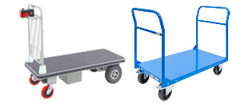
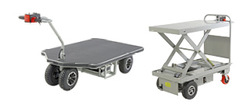

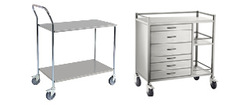
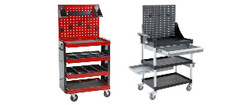
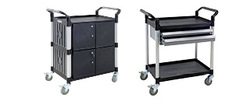
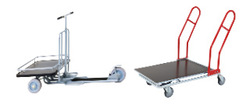
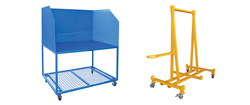



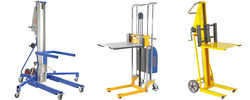



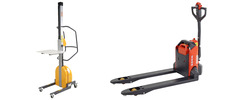
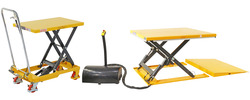
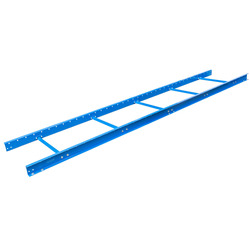
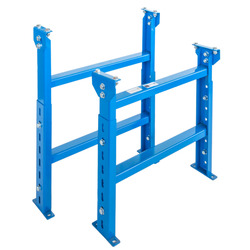
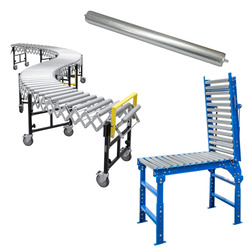
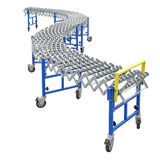




















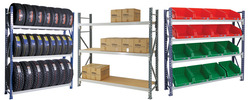
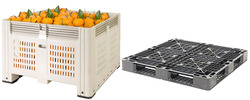
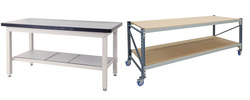
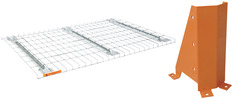
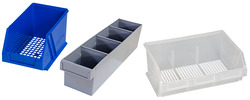



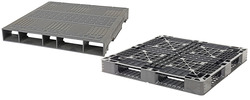

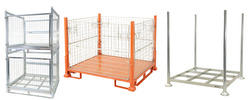
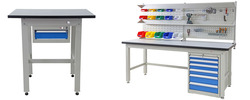
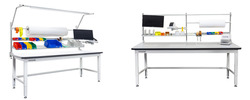


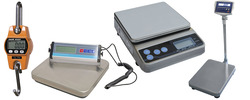



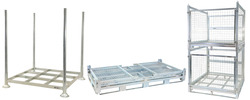
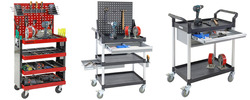
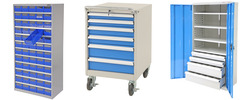

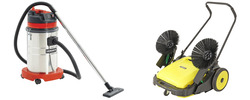











 Trolleys / Hand Trucks
Trolleys / Hand Trucks 2 Tier Trolleys
2 Tier Trolleys 3 Tier Trolleys
3 Tier Trolleys Aluminium Trolleys
Aluminium Trolleys Appliance & Hand Trucks
Appliance & Hand Trucks Cage Trolleys
Cage Trolleys Cleaning Carts & Trolleys
Cleaning Carts & Trolleys Construction Trolleys
Construction Trolleys Dollies
Dollies Foldable Trolleys
Foldable Trolleys Hospital Trolleys
Hospital Trolleys Laundry/Linen Trolleys
Laundry/Linen Trolleys Load Skates & Tow Tugs
Load Skates & Tow Tugs Mail / Office Trolleys
Mail / Office Trolleys Multi Purpose Trolleys
Multi Purpose Trolleys Multi-Tier Shelf Trolleys
Multi-Tier Shelf Trolleys Order Picking Trolleys
Order Picking Trolleys Panel Cart Trolleys
Panel Cart Trolleys Platform Trolleys
Platform Trolleys Powered Trolleys
Powered Trolleys Shopping Trolleys
Shopping Trolleys Stainless Steel Trolleys
Stainless Steel Trolleys Tool Trolleys
Tool Trolleys Utility Carts
Utility Carts Warehouse Trolleys
Warehouse Trolleys Custom Trolleys
Custom Trolleys Lifting Equipment
Lifting Equipment Forklift Attachments
Forklift Attachments Jib Attachments
Jib Attachments Lifting Hoists & Pallet Hooks
Lifting Hoists & Pallet Hooks Manual Stackers & Lifters
Manual Stackers & Lifters Pallet Jacks
Pallet Jacks Pallet Lifters
Pallet Lifters Pallet Rotators & Dispenser
Pallet Rotators & Dispenser Powered Pallet Trucks & Electric Lifters
Powered Pallet Trucks & Electric Lifters Scissor Lift Trolleys and Tables
Scissor Lift Trolleys and Tables Conveyor Equipment
Conveyor Equipment Conveyor Frames
Conveyor Frames Conveyor Stands
Conveyor Stands Roller Conveyors
Roller Conveyors Skate Wheel Conveyors
Skate Wheel Conveyors Access Equipment
Access Equipment Container & Yard Ramps
Container & Yard Ramps Step Stools & Ladders
Step Stools & Ladders Work Platforms & Crane Cages
Work Platforms & Crane Cages Drum Handling
Drum Handling Drum Storage & Bunding
Drum Storage & Bunding Drum Trolleys & Lifters
Drum Trolleys & Lifters Forklift Drum Handling
Forklift Drum Handling Containment & Spillage
Containment & Spillage Aerosol Cans Storage Cages
Aerosol Cans Storage Cages Bunded Pallets & Storage
Bunded Pallets & Storage Corrosive Goods Storage Cabinets
Corrosive Goods Storage Cabinets Flammable Liquid Cabinets
Flammable Liquid Cabinets Forklift Gas Storage Cages
Forklift Gas Storage Cages Gas Cylinder Storage
Gas Cylinder Storage Site Storage
Site Storage Spill Kits
Spill Kits Stillage Cages
Stillage Cages Waste Handling
Waste Handling Bin Lifters & Tippers
Bin Lifters & Tippers Plastic Waste Bins and Carts
Plastic Waste Bins and Carts Steel Waste and Tipping Bins
Steel Waste and Tipping Bins Storage Equipment
Storage Equipment 750 Series Cage Configurations
750 Series Cage Configurations Heavy Duty Cabinets & Benches
Heavy Duty Cabinets & Benches Heavy Duty Shelving
Heavy Duty Shelving Mega Bins & Pallets
Mega Bins & Pallets Packing Benches
Packing Benches Pallet Racking Accessories
Pallet Racking Accessories Parts Trays & Stor-Pak Bins
Parts Trays & Stor-Pak Bins Pegboard & Louvre Panels
Pegboard & Louvre Panels Plastic Bins
Plastic Bins Plastic Handling Solutions Bins
Plastic Handling Solutions Bins Plastic Pallets
Plastic Pallets Stack & Nest Bins
Stack & Nest Bins Storage Cages
Storage Cages Workplace Equipment
Workplace Equipment Workbenches
Workbenches Modular Workbenches
Modular Workbenches Electric Height-Adjustable Workbenches
Electric Height-Adjustable Workbenches Floor Matting
Floor Matting Industrial Weighing Scales
Industrial Weighing Scales Pallet Wrapping & Packaging Machinery
Pallet Wrapping & Packaging Machinery Ramps
Ramps Stationery Cupboards
Stationery Cupboards Storage and Stillage Cages
Storage and Stillage Cages Tool Trolleys
Tool Trolleys Tooling Cabinets
Tooling Cabinets Wheelie Bins
Wheelie Bins Workshop Equipment
Workshop Equipment Safety Equipment
Safety Equipment Gloves and PPE
Gloves and PPE Pallet Rack Post Protectors
Pallet Rack Post Protectors Safety Barriers & Bollards
Safety Barriers & Bollards Safety Knives & Cutters
Safety Knives & Cutters Signs and Traffic Supplies
Signs and Traffic Supplies Tool & First Aid Boxes
Tool & First Aid Boxes Construction Equipment
Construction Equipment Concrete Equipment
Concrete Equipment General Site Equipment
General Site Equipment Lifting Equipment
Lifting Equipment Site Storage
Site Storage Waste
Waste 









